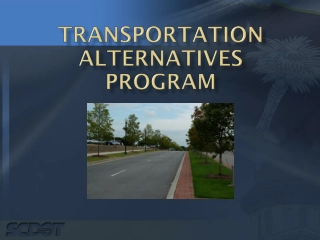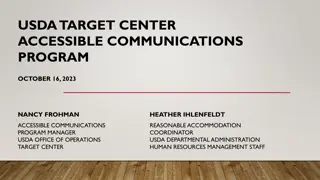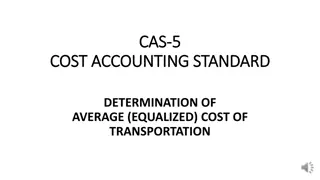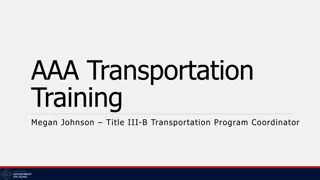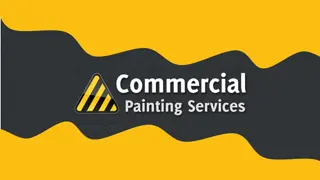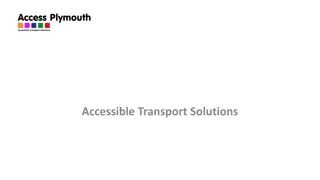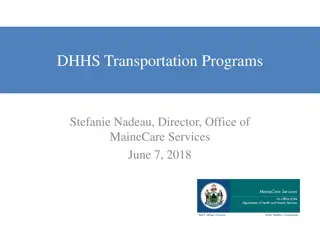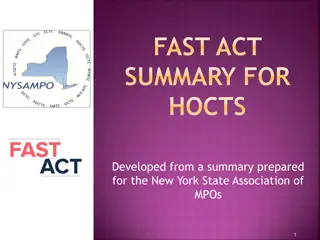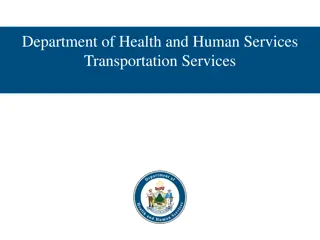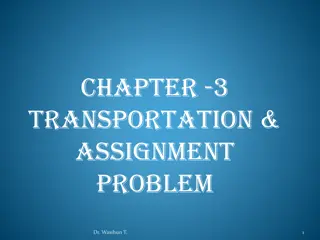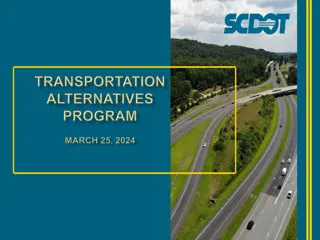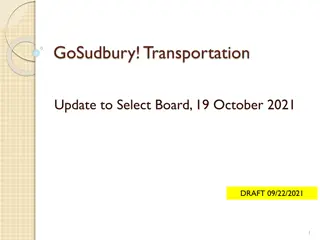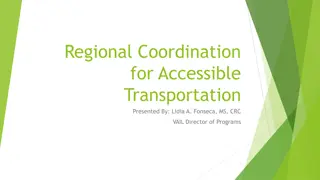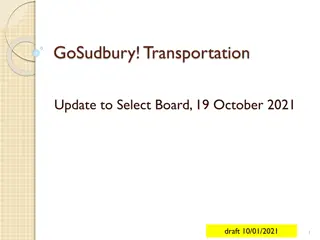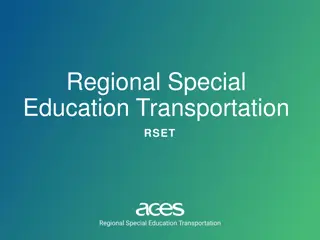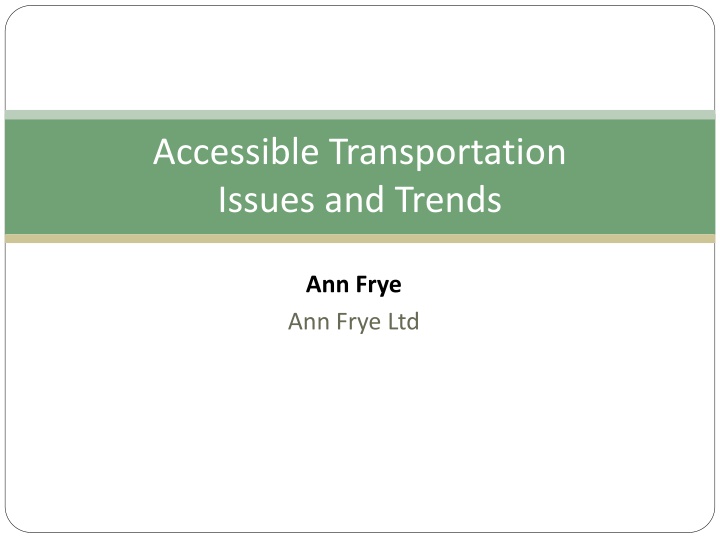
Accessible Transportation Issues and Trends by Ann Frye Ltd.
This information discusses the biggest mobility problems related to accessible transportation, groups facing difficulty in getting around, top priorities for action, and ways to make a real difference in accessibility. It emphasizes the importance of addressing accessibility issues in public transportation for better inclusivity and economic progress.
Download Presentation

Please find below an Image/Link to download the presentation.
The content on the website is provided AS IS for your information and personal use only. It may not be sold, licensed, or shared on other websites without obtaining consent from the author. If you encounter any issues during the download, it is possible that the publisher has removed the file from their server.
You are allowed to download the files provided on this website for personal or commercial use, subject to the condition that they are used lawfully. All files are the property of their respective owners.
The content on the website is provided AS IS for your information and personal use only. It may not be sold, licensed, or shared on other websites without obtaining consent from the author.
E N D
Presentation Transcript
Accessible Transportation Issues and Trends Ann Frye Ann Frye Ltd
What are the biggest mobility problems? 6% Poor signage/wayfinding 12% Overcrowding of vehicles/terminals 7% Lack of accessible equipment e.g ticketing 15% Lack of accessible information 11% Lack of reliable information 35% Attitude of drivers and other staff 26% Availability of public transport in general 16% Cost/affordability of public transport 12% Lack of accessible door to door services 47% Inaccessible public transport vehicles 17% Danger from traffic 11% High kerbs/deep storm drains 24% Absence of pavements/sidewalks 25% Uneven or broken road surfaces 0% 5% 10% 15% 20% 25% 30% 35% 40% 45% 50% Source: GAATES survey Ann Frye Ltd 16/03/2025 2
Who has the most difficulty getting around? 90% 87% 80% 70% 67% 60% 48% 50% 40% 30% 30% 17% 16% 20% 10% 0% Wheelchair users People with walking difficulty People who are blind or with low vision People who are deaf or with hearing loss People who have cognitive impairment or learning disabilities People with mental health problems. Source: GAATES survey Ann Frye Ltd 16/03/2025 3
What are the top priorities for action? Better attitude and staff awareness/need for training; Legislative support and control mechanisms/enforcement and monitoring of access improvements; More attention to making the pedestrian environment accessible; More accessible public transport (buses in particular). Source: GAATES survey Ann Frye Ltd 16/03/2025 4
What can make a real difference? Accessibility is often a low priority for Governments; It is seen as an optional extra, not as a necessity; We need to re-think the economic and fiscal basis for accessibility. We could: Re-position accessibility as a benefit rather than a cost; Include access to transport as an official measure of economic progress. Ann Frye Ltd 16/03/2025 5
The economic power of tourism Due to the ageing population in industrialized countries, the rate of disability among people with the capacity to travel is increasing, adding to the demand for an accessible environment, transport and services - which adds to the market value of the accessible tourism segment. Source: UNWTO Ann Frye Ltd 16/03/2025 6
Getting it right isnt always expensive! Travel training for older and disabled people; Awareness training of drivers and other transport staff; Engaging with disabled people to agree priorities; Applying universal design principles. Ann Frye Ltd 16/03/2025 7
Make sure its fit for purpose We still lack consistent and meaningful indicators of accessibility; Too often progress is measured by numbers of adapted buses or bus stops, not by the number of people able to travel; Developing countries tend to adopt standards drawn up by international bodies and focussed on different economies: they are often inappropriate. Ann Frye Ltd 16/03/2025 8
What is working well? Joint working between different sectors of Government is also important. Good examples include: In the US: Bringing key Government Departments together with a shared agenda of liveable communities; In Norway: Government wide commitment to Universal Design; In parts of China: formalising annual consultation between city construction authorities and older and disabled people. Ann Frye Ltd 16/03/2025 9
What will really make a difference? Greater alignment between agencies working on accessibility; Re-positioning the economic status of accessibility as a benefit not a cost; Promoting wider international understanding of the need for accessibility; Developing meaningful indicators of accessibility; Highlighting the need for training of transport professionals; Using the economic power of tourism to fund improvements. Ann Frye Ltd 16/03/2025 10
What will really make a difference ? (2) Re-orientating research effort towards practical application and implementation; Focusing on knowledge transfer that is appropriate to local needs: setting up an international knowledge transfer database; Creating a template for stronger stakeholder engagement to re-enforce and monitor laws , including the UN Convention. Ann Frye Ltd 16/03/2025 11
ann@annfrye.co.uk Ann Frye Ann Frye Ltd

